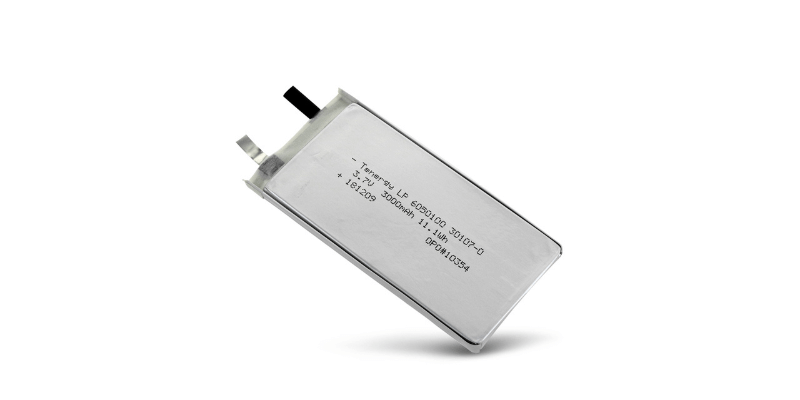Det råder ingen tvekan om att batterierna till din telefon skiljer sig från dem i din elbil. Applikationen dikterar vanligtvis vilken typ och storlek som behövs. Idag ska vi utforska de olika batterierna som finns och hur du väljer den bästa batteristorleken för ditt system.
Battericellsformer
Battericeller finns i fyra vanliga former: knapp eller mynt, polymer eller påse, prismatisk och cylindrisk. Varje form skiljer sig i storlek och kemi för att passa olika applikationer.
Mindre celler är ofta kopplade i serie eller parallellt för att skapa större batterier. Till exempel består djupgående litiumbatterier ofta av flera cylindriska eller prismatiska celler.
Knappceller
Även känd som myntceller, knappceller är små, runda batterier som liknar mynt.
Inrymt i ett metallhölje, de finns i standardstorlekar baserat på diameter och tjocklek.
Till exempel är CR2032-cellen 20 mm bred och 3,2 mm tjock.
Typiskt icke-uppladdningsbara knappceller är vanliga i liten elektronik som kräver minimal ström. Deras lilla storlek gör dem idealiska för bärbara eller bärbara enheter som klockor, bilnyckelbrickor, hörapparater, laserpekare och fjärrstartare.

Polymerceller
Påse, eller påsceller, introducerad 1995, saknar ett hårt yttre hölje och är förseglade i en foliepåse. Deras flexibla elektrolyt möjliggör tunna profiler och anpassade former.
Samtidigt som de erbjuder hög förpackningseffektivitet och energitäthet, är påsceller benägna att svullna och penetrationsrisker.
Standard Li-polymerceller används ofta i handhållna enheter som mobiltelefoner, surfplattor och bärbara datorer. Böjda polymerceller är lämpliga för bärbara enheter, medan storformatspolymerceller används i Energilagringssystem (ESS) och elfordon.

Prismatiska celler
Prismatiska celler är förpackade i hållbara aluminium- eller stålhöljen och finns i begränsade standardstorlekar baserat på dimensioner. Deras lågprofilerade design förbättrar volymutnyttjandet i batteripaket men kan vara dyrt att tillverka.
Prismatiska celler har också mindre effektiv värmehantering, en kortare livslängd än cylindriska celler och kan svälla.
Idag används Li-prismatiska celler i enheter som telefoner och bärbara datorer, såväl som i större format för elfordon och hybrider.

Cylindriska celler
Cylindriska celler, såsom 18650 (18 mm diameter, 65 mm längd), 26650 (26 mm diameter, 65 mm längd) och 21700 (21 mm diameter, 70 mm längd), är de mest populära uppladdningsbara litiumjonbatterierna.
Dessa celler är inneslutna i en metallburk och är symmetriska och effektiva, vilket minimerar stress och tryck.
Med högre energitäthet än platta celler är cylindriska celler mångsidiga och föredragna för flercellskonfigurationer i olika applikationer, inklusive medicinska, militära, konsumentelektronik och elektriska fordon. De är robusta och erbjuder högre energitäthet när de används i batteripaket, vilket gör dem till ett toppval för många industrier.

Batterikemi, spänningar och ampere
Batterikemi
Det finns fyra huvudkemier för batterier: blysyra, nickel-kadmium (Ni-Cd), nickel-metallhydrid (Ni-MH) och litiumjon, var och en med olika underkemier.
Den viktigaste skillnaden mellan dessa kemier är energitätheten. Litiumjonbatterier har den högsta energitätheten, följt av Ni-MH, Ni-Cd och blysyra. Högre energitäthet möjliggör mindre, lättare batterier.
Men andra faktorer spelar roll när du väljer en batterikemi.
Till exempel, blybatterier utmärker sig som startbatterier på grund av deras höga kallstartförstärkare (CCA), vilket gör dem bättre för startapplikationer än litiumjonbatterier.

Batterispänning
Batterier varierar inte bara i fysisk storlek utan även i spänning. Till exempel har AA- och AAA-batterier vanligtvis en spänning på 1,5 volt, medan vissa djupcykelbatterier kan nå upp till 48 volt.
Här är de mest populära batteriets nominella spänningar:
- NiCd och NiMH: 1,20V/cell för konsumenttillämpningar
- blysyra: 2V/cell
- LiFePO4: 3,2V/cell
- litiumjon: 3,60V/cell
- djupcykel: 12V
- Husbilar, golfbilar och båtar: 24V, 36V, 48V
En användbar riktlinje att komma ihåg är att högre effektkrav för en applikation kräver en högre batterispänning. Effekten av ett batteri bestäms genom att multiplicera dess spännings- och strömmätningar (volt x ampere = watt). I högeffektapplikationer kan användning av en högre spänning minska strömmen, vilket möjliggör användning av mindre kablar.

Batteriförstärkare
Den primära bestämningsfaktorn för ett batteris storlek är dess kapacitet, som mäts i amperetimmar (Ah).
Denna kapacitet beräknas genom att multiplicera strömmen (i ampere) med körtiden (i timmar).
Till exempel kan ett 100 Ah batteri leverera cirka två ampere i 50 timmar eller fyra ampere i 25 timmar. Det är viktigt att notera att kapacitetsklassificeringen fungerar som en uppskattning och kanske inte är exakt.

Vanliga hushållsbatteristorlekar
AA- och AAA-batterier används ofta i små hushållselektronik på grund av deras kompakta storlek och 1,5-volts nominella spänning.
AAA-batterier, som är mindre än AA-batterier, har vanligtvis halva kapaciteten. Dessa batterier finns ofta i enheter som fjärrkontroller och små ficklampor som kräver minimal ström.
Å andra sidan är C- och D-batterier populära val för större hushållselektronik. D-batterier, större än C-batterier, ger cirka 50 % mer kapacitet och används ofta i högeffektsapplikationer som bärbara stereoapparater och industriell elektronik som behöver längre drifttider.
Slutligen är 9-voltsbatterier, även kända som E-batterier, rektangulära till formen och används ofta för att driva enheter som rökdetektorer i hushåll.
Vad är batterigruppens storlekar?
De Battery Council International (BCI) fastställer standardgruppstorlekar för laddningsbara batterier som används i bilar, båtar och husbilar. Dessa gruppstorlekar hänvisar till de fysiska måtten på batterierna men anger inte deras kapacitet.
I allmänhet tenderar större batterier att ha högre kapacitet; detta är dock inte alltid fallet. Det finns mer än 50 olika batterigruppstorlekar tillgängliga. De mest populära listas nedan:
| Gruppstorlek | L x B x H (mm) |
| Grupp 24 Batteri | 260 x 173 x 225 |
| Grupp 27 Batteri | 306 x 173 x 225 |
| Grupp 31 Batteri | 330 x 173 x 240 |
| Grupp 34 Batteri | 260 x 173 x 200 |
| Grupp 35 Batteri | 230 x 175 x 225 |
| Grupp 51 Batteri | 238 x 129 x 223 |
| Grupp 65 Batteri | 306 x 192 x 192 |
| Grupp 78 Batteri | 260 x 180 x 186 |
Vissa av våra kunder tror att ett större gruppnummer betyder ett större batteri, men det är inte sant. Som du kan se ovan är ett Group 31-batteri faktiskt större än ett Group 51-batteri.
Batterier för bilar, husbilar, båtar och golfbilar
Det finns ingen universell batterigruppsstorlek som passar alla bilar, husbilar, båtar eller golfbilar. Fordonstillverkare ger rekommendationer för att välja rätt batteristorlek.
För passagerarfordon inkluderar vanliga batterigruppstorlekar 24, 27, 34, 35, 48, 49, 65 och 78. Husbilar och båtar använder ofta liknande storlekar.
Golfbilsbatterier är kategoriserade med “GC”. Den vanligaste är GC2 (6 volt), tillsammans med alternativ som GC8 (8 volt) och GC12 (12 volt).

Att välja rätt batteristorlek för ditt system
Att välja rätt batteristorlek innebär mer än att bara välja det största du har råd med. Tänk på dina faktorer som energibehov och tillgängligt utrymme.
Holo Battery-experter kan hjälpa till att bestämma den nödvändiga batteristorleken genom att tillhandahålla dina enheter’ strömförbrukning för att beräkna nödvändiga amperetimmar. Kontakta våra tekniska experter idag hjälper de gärna till!

